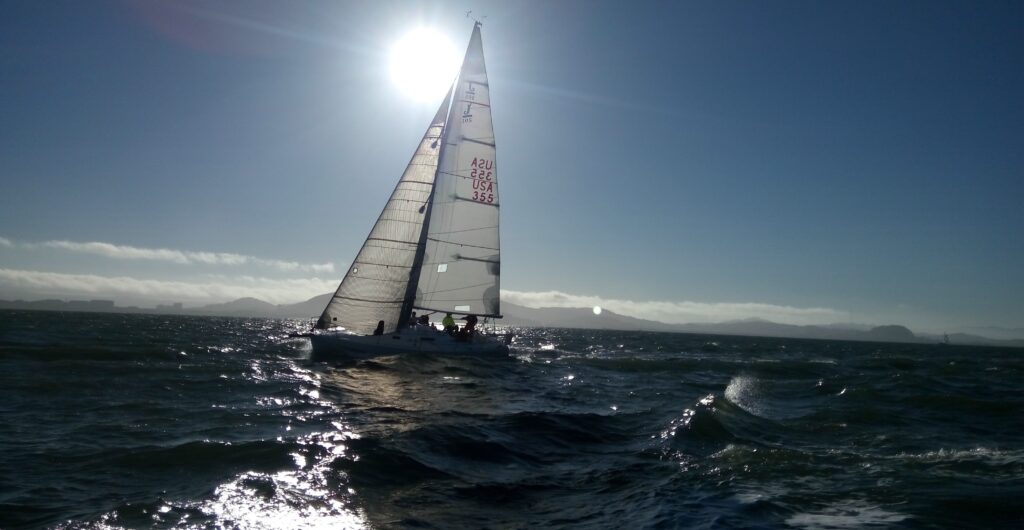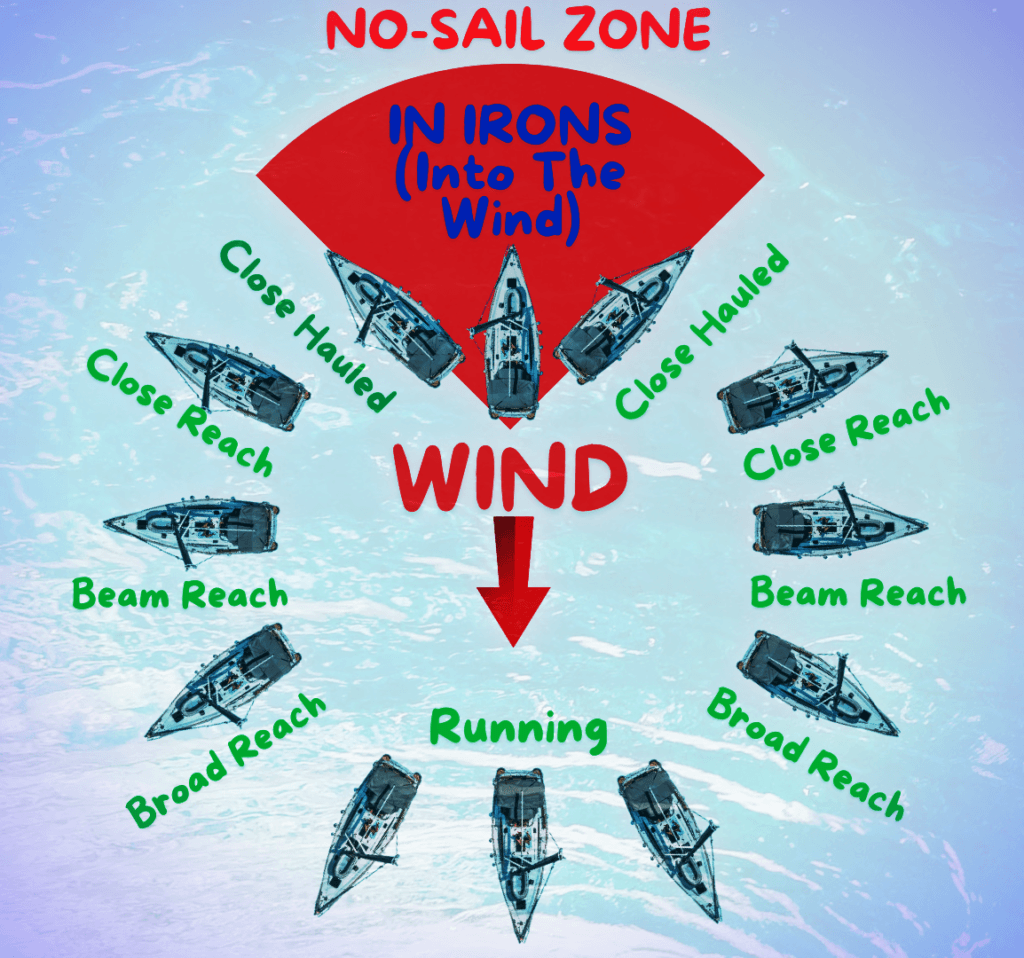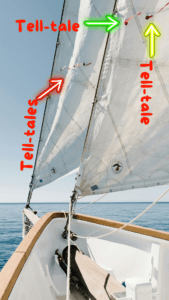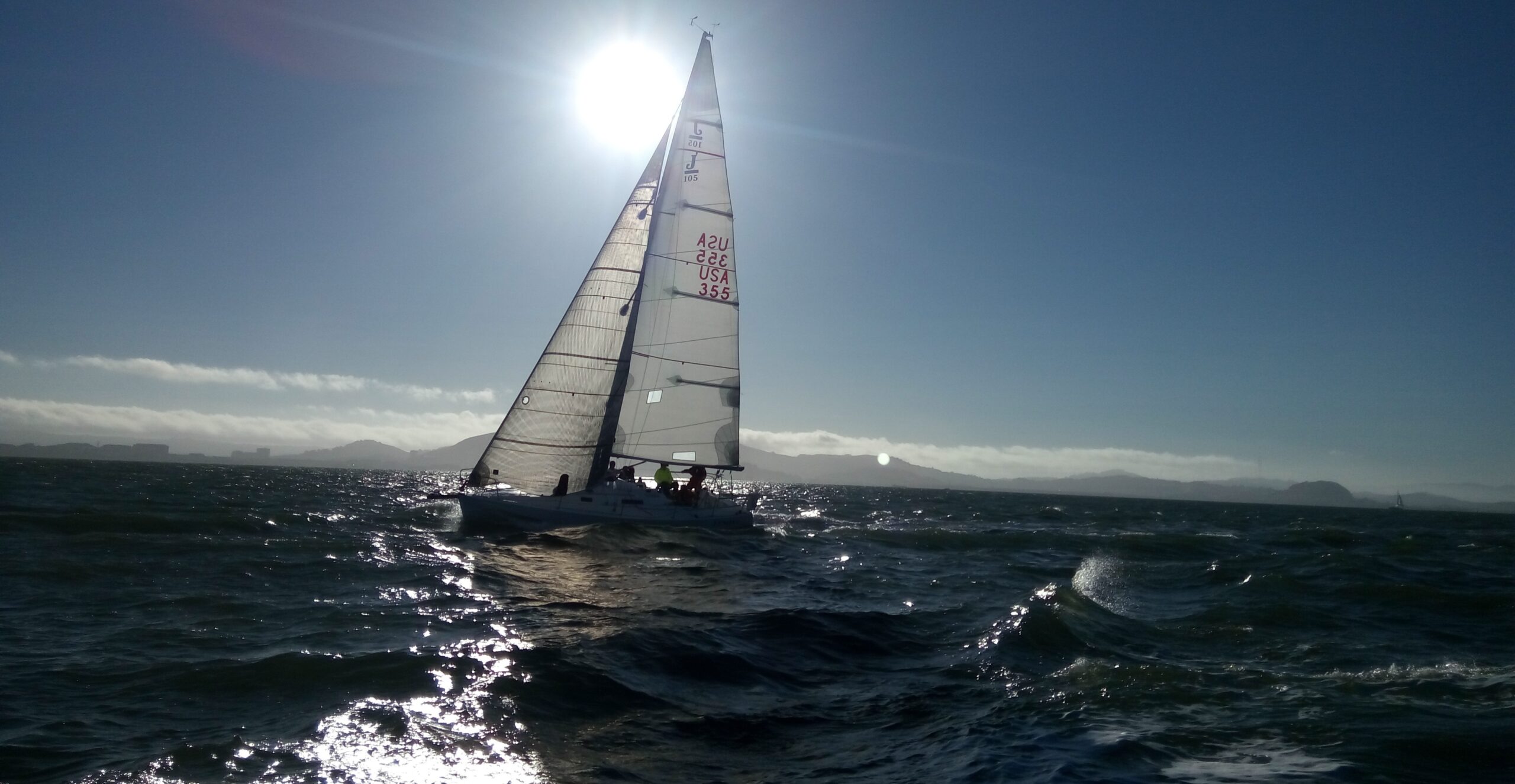Let’s talk about wind, the faithful companion of every sailor. Understanding wind patterns is crucial for anyone looking to master the art of sailing. There’s a lot of opportunity in becoming adept with this knowledge, from plotting your course to harnessing the wind’s power for an enjoyable sail.

For better view click on images to expand
Whether you’re navigating a calm lake or the open ocean, wind behavior dictates your sailing strategy and ultimately your success on the water. For sailors, the wind is both a friend and a challenge—powering your vessel, but also requiring constant interpretation and adaptation. I encourage you to check out my article “Gone With The Wind: True Or Apparent?,” to learn the differences between True Wind and Apparent Wind. Now let’s take a closer look at the intricacies of wind patterns, their impact on sailing, and practical examples to enhance your understanding.
The Basics of Wind and Sailing
What is Wind?
Wind is the movement of air caused by differences in atmospheric pressure. As high-pressure air moves towards areas of lower pressure, we experience this movement as wind. For sailors, wind is the primary source of propulsion, filling the sails and driving the boat forward. If you’re interested in understanding the fundamentals of analyzing and predicting weather conditions for sailing, you’ll find an excellent breakdown in this guide.
Understanding how wind interacts with the environment, including bodies of water and landmasses, is crucial for effective sailing. Wind can be influenced by various factors, including geography, weather systems, and seasonal changes.
Points of Sail
The points of sail are essential for interpreting how wind direction affects your boat’s movement. The key points of sail include:

Close-Hauled: Sailing as close to the wind direction as possible, typically about 30-45 degrees off the wind.
Beam Reach: Sailing with the wind coming directly from the side of the boat, at a 90-degree angle.
Broad Reach: Sailing with the wind coming from behind and to the side, at an angle between 90 and 180 degrees.
Running: Sailing directly downwind, with the wind coming from behind.
Each point of sail has different characteristics and requires specific sail adjustments. For example, when sailing close-hauled, the sails need to be trimmed in tightly, while running downwind allows for sails to be let out more freely.
Global Wind Patterns
Wind patterns involve understanding the distinction between prevailing winds, which are the winds that blow predominantly from a single general direction over a particular point on the Earth’s surface, and gusts, which are sudden, brief increases in wind speed. Knowing this can make a significant impact on your sailing strategy.
Trade Winds
Trade winds are steady, prevailing winds that blow from the east towards the west in the Earth’s tropical regions. They are found between the equator and 30 degrees latitude in both hemispheres. Historically, trade winds were crucial for sailing ships crossing the Atlantic and Pacific Oceans.
Example: Imagine you are sailing from the Canary Islands to the Caribbean. By positioning yourself to the south, you can catch the northeast trade winds, providing a reliable push towards your destination. This was the strategy used by early explorers like Christopher Columbus.
Westerlies
Westerlies blow from the west towards the east in the mid-latitudes (30 to 60 degrees latitude). They are stronger in the southern hemisphere due to the lack of landmass, which creates fewer obstacles for wind flow.
Example: Sailing from New York to Europe, you would rely on the westerlies to help push you across the North Atlantic. This wind pattern has been utilized by sailors for centuries for transatlantic crossings, offering a more direct route to European ports.
Polar Easterlies
Polar easterlies are cold winds that blow from the east near the poles. They meet the westerlies at the polar front, where cold polar air mixes with warmer air from the mid-latitudes.
Example: In high-latitude expeditions, such as those to the Arctic or Antarctic, understanding polar easterlies can be crucial for navigating the frigid waters and avoiding severe weather conditions.
Doldrums
The doldrums are areas of low pressure near the equator where trade winds from both hemispheres converge. This region is characterized by calm winds and unpredictable weather, making it a challenging area for sailors.
Example: During a voyage from West Africa to South America, you might find yourself in the doldrums. Here, you could experience days of stagnant air, followed by sudden squalls. Planning your route to avoid prolonged stays in this region is essential to maintaining progress.
Local Wind Patterns
Wind patterns aren’t just about global wind systems; they’re also about the local quirks that can make or break your day on the water. Whether it’s a sea breeze or a land breeze, local weather patterns play a pivotal role in sailing. Consistently observing your local wind patterns is one of the best practices for becoming a proficient sailor.
Sea Breezes and Land Breezes
Sea breezes occur when the land heats up faster than the water during the day, causing air to rise over the land and cooler air from the sea to move in to replace it. At night, the process reverses, creating a land breeze as the land cools faster than the water.
Example: While sailing along a coastal area in the afternoon, you might notice a steady onshore breeze that dies down in the evening. This is the sea breeze effect, which you can use to plan your sailing activities, taking advantage of the consistent wind during the day and calmer conditions at night.
Katabatic Winds
Katabatic winds are downslope winds caused by cold, dense air flowing downhill from higher elevations. They can be quite strong and sudden, especially in mountainous coastal regions.
Example: If you’re sailing near a fjord or steep coastal cliffs in Norway, you might encounter katabatic winds. These winds can be unpredictable and require quick adjustments to your sails and course to maintain control of your boat.
Mountain and Valley Breezes
Mountain breezes occur at night when cool air flows down mountain slopes into valleys. Valley breezes occur during the day when warm air rises from the valley floor up the slopes.
Example: Sailing in a mountainous region like Lake Tahoe, you can expect valley breezes in the afternoon, making for pleasant sailing conditions, and mountain breezes at night, which can create stronger winds in certain areas of the lake.
Weather Systems and Wind
Analyzing weather maps and wind forecasts includes learning to interpret the signs of the Nature, such as the shape of clouds or the texture of the water’s surface. Understanding these fundamentals makes the next steps much easier and more exciting, helping you become a better sailor.
High-Pressure Systems
High-pressure systems, or anticyclones, are associated with fair weather and light winds. In these systems, air moves outward and sinks, leading to clear skies and stable conditions.
Example: During a summer sailing trip in the Mediterranean, a high-pressure system might bring calm seas and gentle breezes, ideal for relaxed cruising and sightseeing along the coast.
Low-Pressure Systems
Low-pressure systems, or cyclones, are associated with stormy weather and strong winds. Air converges towards the low-pressure center and rises, leading to cloud formation and precipitation.
Example: Sailing in the North Atlantic, you might encounter a low-pressure system bringing strong winds and rough seas. Understanding how to navigate around the system can help you avoid the worst conditions and maintain a safer course.
Cold Fronts and Warm Fronts
Cold fronts occur when a cold air mass moves in and replaces a warmer air mass, leading to sudden changes in wind direction and speed. Warm fronts occur when a warm air mass overtakes a cold air mass, usually bringing gradual changes in weather and wind.
Example: On a sailing expedition along the eastern seaboard of the United States, encountering a cold front might bring a sudden shift from warm, southerly winds to strong, cold northerlies. Adjusting your sails and preparing for these changes can help you manage the transition smoothly.
Wind Shifts and Gusts
Wind shifts are changes in wind direction that can occur due to passing weather systems, geographic features, or diurnal patterns. They can be subtle or sudden and require sailors to adjust their course and sails accordingly.
Example: While sailing in a bay, you might notice the wind gradually shifting from southeast to southwest as the day progresses. Anticipating these shifts allows you to adjust your sails proactively, maintaining optimal performance.
Dealing with Gusts
Gusts are sudden increases in wind speed that can catch sailors off guard. They are often caused by turbulence or the presence of obstacles that disrupt the flow of air.
Example: In a regatta on San Francisco Bay, gusts can come off the hills and catch you by surprise. Being vigilant and ready to ease your sails quickly can help you manage the sudden burst of wind and maintain control of your boat.
Practical Tips for Sailing with Wind Patterns
If you want to master sailing, grasping the subtleties of wind patterns is non-negotiable. Additionally, learning how to read Reading the water’s surface will turn your good day on the water into a great one.
Read the Water
The surface of the water can provide clues about wind patterns. Ripples indicate lighter winds, while whitecaps suggest stronger breezes. Darker patches of water can signal gusts or shifts in wind direction.
Example: Observing the water during a race can give you an advantage. If you see darker water ahead, you might anticipate a gust and adjust your sail trim accordingly to harness the increased wind speed.
Use Tell-Tales

Tell-tales are small pieces of yarn or fabric attached to the shrouds or sails that indicate wind direction relative to your sails. Properly interpreting tell-tales helps you trim your sails for optimal performance.
Example: When sailing upwind, watching the tell-tales on your jib can help you find the best angle. If the windward tell-tale is fluttering, you may need to trim the sail tighter to point higher into the wind.
By learning to read the signs in the water, interpreting tell-tales, and anticipating changes in weather systems, you can harness the power of the wind to your advantage. Whether you’re racing in a regatta or enjoying a leisurely cruise, a deep understanding of wind patterns will enhance your sailing experience and help you make the most of your time on the water. Let’s not forget, experience is the greatest teacher. Studying the narratives of seasoned sailors, their triumphs, and their weather-worn strategies can be as valuable as any tool in your navigation kit. Every voyage has its lessons, and you’re going to want to take notes.
Sailing is a dynamic sport, a blend of art and science. As you gain experience, you’ll learn not only to read the wind but to anticipate it, to feel its strength and direction as an extension of your senses. Embrace the wind, respect its power, and always sail with a curious heart—there’s a whole world waiting to be explored. Happy Sailing!

